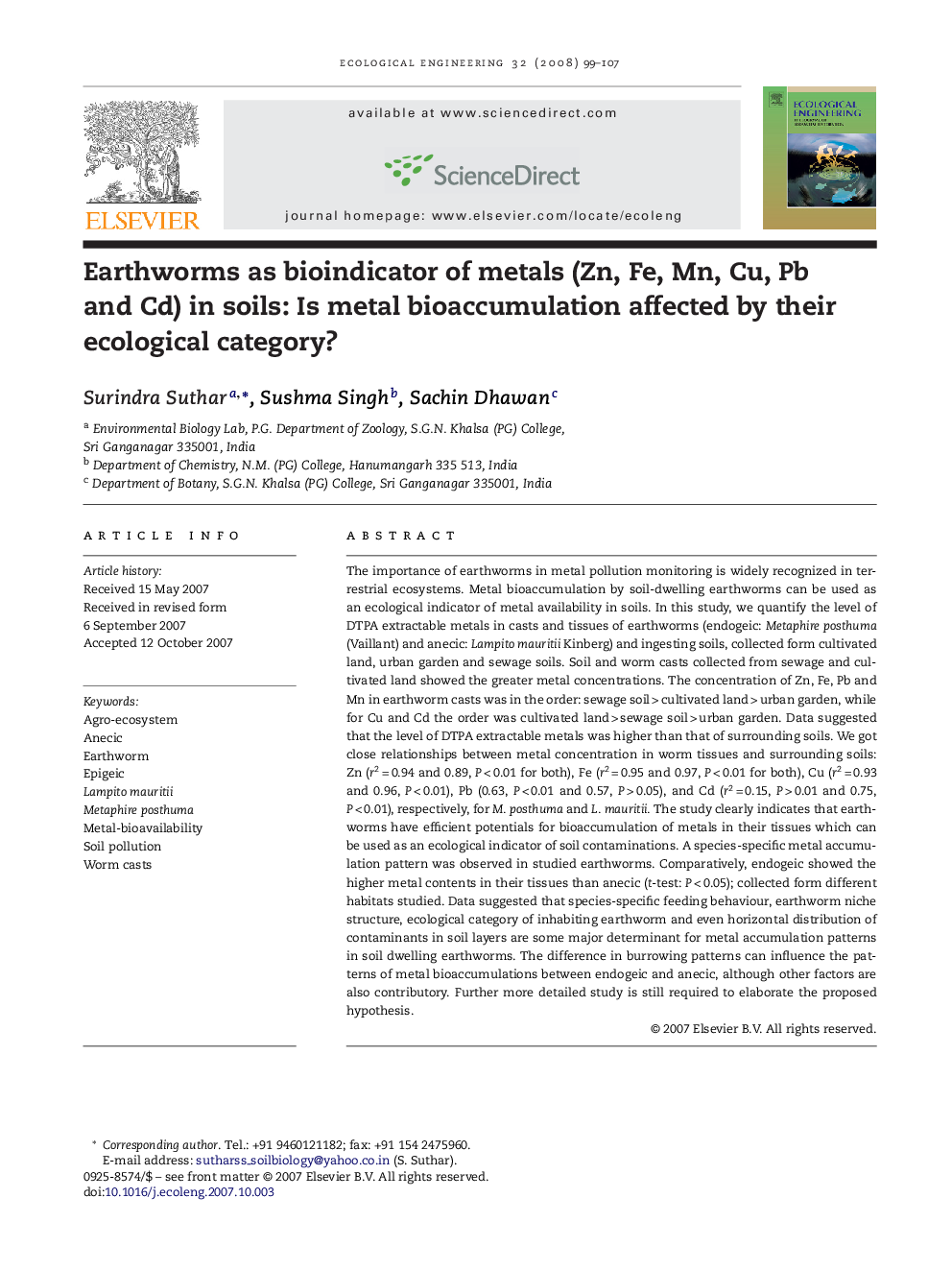| کد مقاله | کد نشریه | سال انتشار | مقاله انگلیسی | نسخه تمام متن |
|---|---|---|---|---|
| 4391038 | 1305207 | 2008 | 9 صفحه PDF | دانلود رایگان |

The importance of earthworms in metal pollution monitoring is widely recognized in terrestrial ecosystems. Metal bioaccumulation by soil-dwelling earthworms can be used as an ecological indicator of metal availability in soils. In this study, we quantify the level of DTPA extractable metals in casts and tissues of earthworms (endogeic: Metaphire posthuma (Vaillant) and anecic: Lampito mauritii Kinberg) and ingesting soils, collected form cultivated land, urban garden and sewage soils. Soil and worm casts collected from sewage and cultivated land showed the greater metal concentrations. The concentration of Zn, Fe, Pb and Mn in earthworm casts was in the order: sewage soil > cultivated land > urban garden, while for Cu and Cd the order was cultivated land > sewage soil > urban garden. Data suggested that the level of DTPA extractable metals was higher than that of surrounding soils. We got close relationships between metal concentration in worm tissues and surrounding soils: Zn (r2 = 0.94 and 0.89, P < 0.01 for both), Fe (r2 = 0.95 and 0.97, P < 0.01 for both), Cu (r2 = 0.93 and 0.96, P < 0.01), Pb (0.63, P < 0.01 and 0.57, P > 0.05), and Cd (r2 = 0.15, P > 0.01 and 0.75, P < 0.01), respectively, for M. posthuma and L. mauritii. The study clearly indicates that earthworms have efficient potentials for bioaccumulation of metals in their tissues which can be used as an ecological indicator of soil contaminations. A species-specific metal accumulation pattern was observed in studied earthworms. Comparatively, endogeic showed the higher metal contents in their tissues than anecic (t-test: P < 0.05); collected form different habitats studied. Data suggested that species-specific feeding behaviour, earthworm niche structure, ecological category of inhabiting earthworm and even horizontal distribution of contaminants in soil layers are some major determinant for metal accumulation patterns in soil dwelling earthworms. The difference in burrowing patterns can influence the patterns of metal bioaccumulations between endogeic and anecic, although other factors are also contributory. Further more detailed study is still required to elaborate the proposed hypothesis.
Journal: Ecological Engineering - Volume 32, Issue 2, 1 February 2008, Pages 99–107